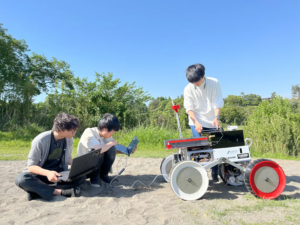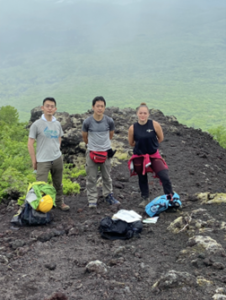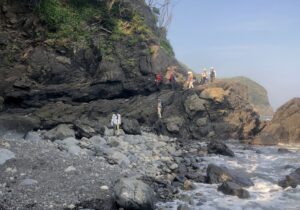【Student Life 2023】Introducing the Paleovertebrate Lab in the Geosphere and Biosphere Science Group
2023「Student Life」
Kazuko Yoshizawa (Geosphere and Biosphere Science Group, 3rd year doctoral student)
I’m Kazuko Yoshizawa and studying paleontology in Tsuihiji lab.
Here, I will write about my lab, my research, and my experience in this department.
1. Research environment
Most of the members in our lab is studying about the body structure of animals living today, mainly reptiles, by dissection and computed tomography technique and are trying to apply the knowledge to fossil animals. In some labs, students join a big project with other labs including foreign ones, but in our lab, each student has its own theme and the research I am doing is a little different from other lab members. I think one good point of our lab is students can try something new and take full credit for it.
Although many of the labs that belong to this department are in the Hongo campus, some labs are based in other places, some even outside Tokyo. Tsuihiji lab is one of them, being in the research center of the National Museum of Nature and Science (Kahaku) in Tsukuba City, Ibaraki Prefecture. There are Kahaku facility in Ueno, Tokyo, too, but that museum is for display for general public, so researchers and the specimen storage of Kahaku is in Tsukuba(Fig.1).
It takes about 2 hours from Hongo campus to Kahaku by train and bus. This is because Dr. Tsuihiji belongs to Kahaku. The professor in the “cooperating groups”, including Kahaku, can become an advisor of graduate students in our department. Almost all the students in our lab live in Tsukuba.
I suppose it would be difficult to commute to Tokyo from Tsukuba very often, but living in Tsukuba has its benefits, like having an easier access to the specimens stored in Kahaku(Fig.2), more opportunities to get carcasses for dissection, and cleaner air than Tokyo.
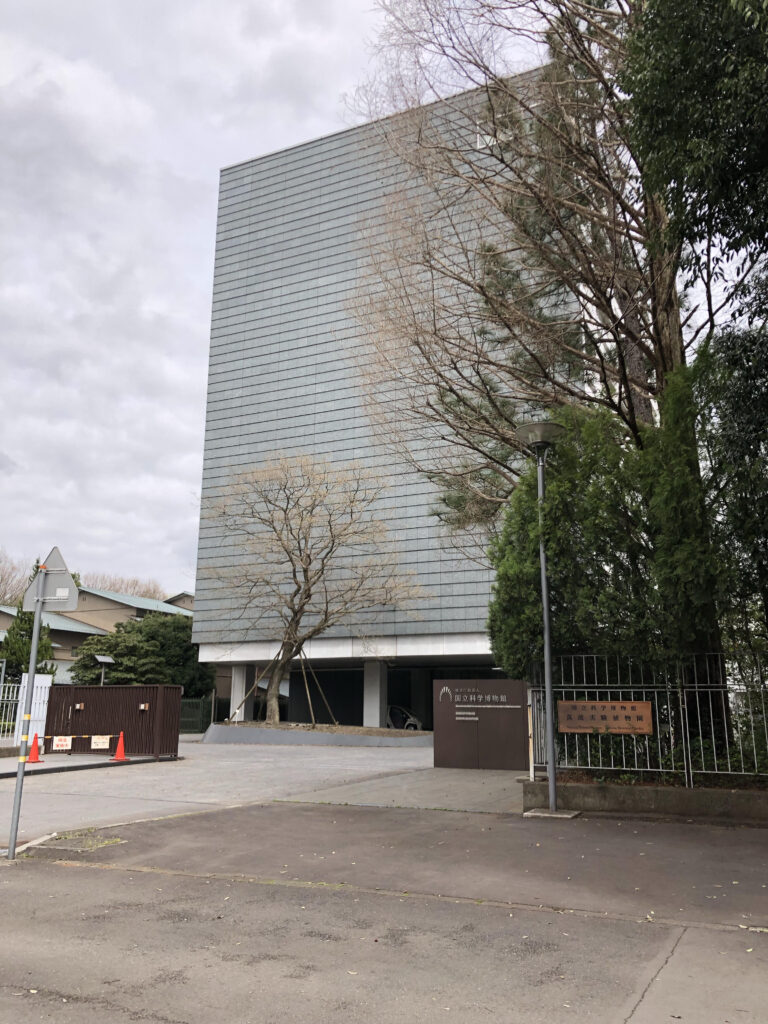
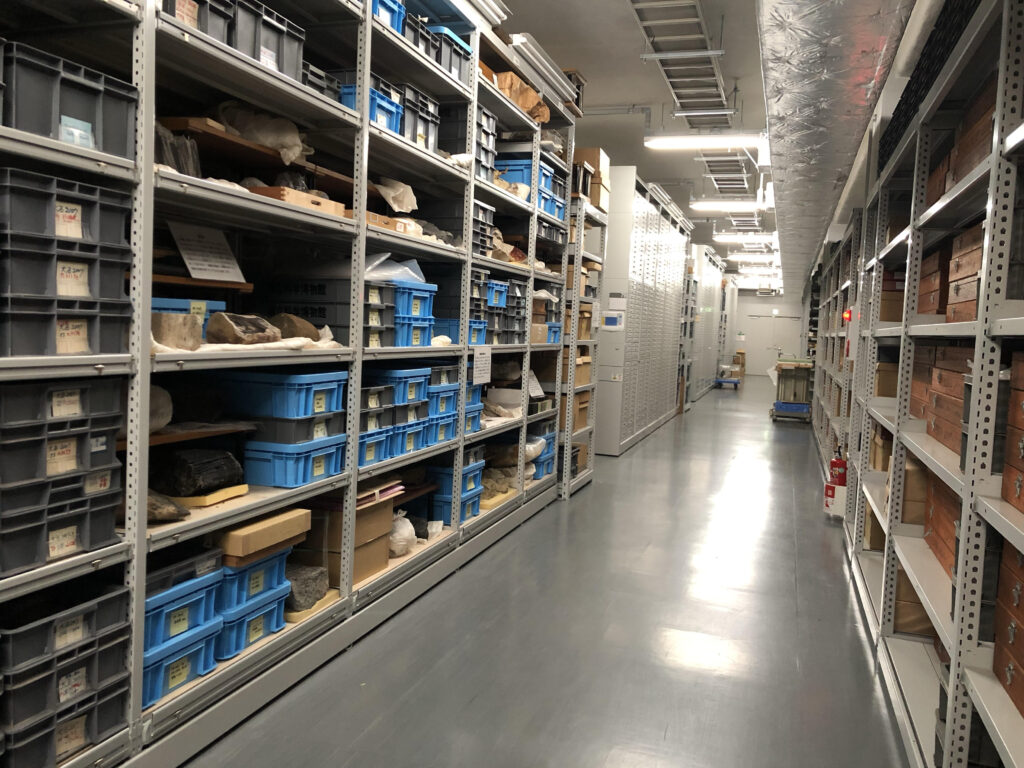
2. My research
I’m studying a group of animals that is generally called “ichthyosaurs”. They appeared on the earth about 250 million years ago and disappeared about 100 million years ago, and they were swimming in the Mesozoic seas. They looked like fish or dolphins, but their ancestors are thought to be animals on land.
I’m interested in how they swam and how they adapted to life in the sea. During the research, I somehow started studying general rules between tail movement of swimmers and swimming speed using mathematics, which was unexpected. It is also interesting that research sometimes expands toward unexpected directions.
Although ichthyosaurs are fascinating, they have never been in the famous “Jurassic Park” or “Jurassic World” movie series. Among the three major marine reptile groups in Mesozoic, ichthyosaurs, plesiosaurs, and mosasaurs, mosasaurs suddenly became popular because they acted very well in the “Jurassic World” film. On the other hand, plesiosaurs have been a part of the anime “Doraemon” twice, so I guess plesiosaurs are relatively well known in Japan.
Please note that these marine reptiles are not dinosaurs. “Doraemon” might be aware of it, because in the movie in 2020, the animal that went on an adventure with Nobita was dinosaurs, not plesiosaurs. Not having been in such famous movie or anime, ichthyosaurs do not seem to be as popular as these reptiles. If you are a movie creator, please give ichthyosaurs an opportunity. They are probably ready.
3. My experience (from undergrad research to PhD course)
I had been interested in paleontology, especially in vertebrate paleontology, so I wanted to join a lab in the discipline. However, I learned that biology and geology are the two important fundamentals for paleontology. I wanted to do a geological study in my undergrad research and move to paleontology lab when I entered graduate school, wishing to understand both of the fundamentals. This is a relatively rare case, because students usually start studying about what they are most interested in as soon as possible.
Hence, I talked about my thoughts to both professors of the geology lab and the paleontology lab before deciding which lab to join for undergrad research. Those professors understood my thoughts and helped me a lot, so communicating with the professors is very important. Consequently, the short period of graduation research was not long enough for me to understand all about geology, but I was able to learn basic skills of geological study, how to sample sedimentary rocks and prepare them for analyses, and that I like to be in the field looking at rocks(Fig.3).
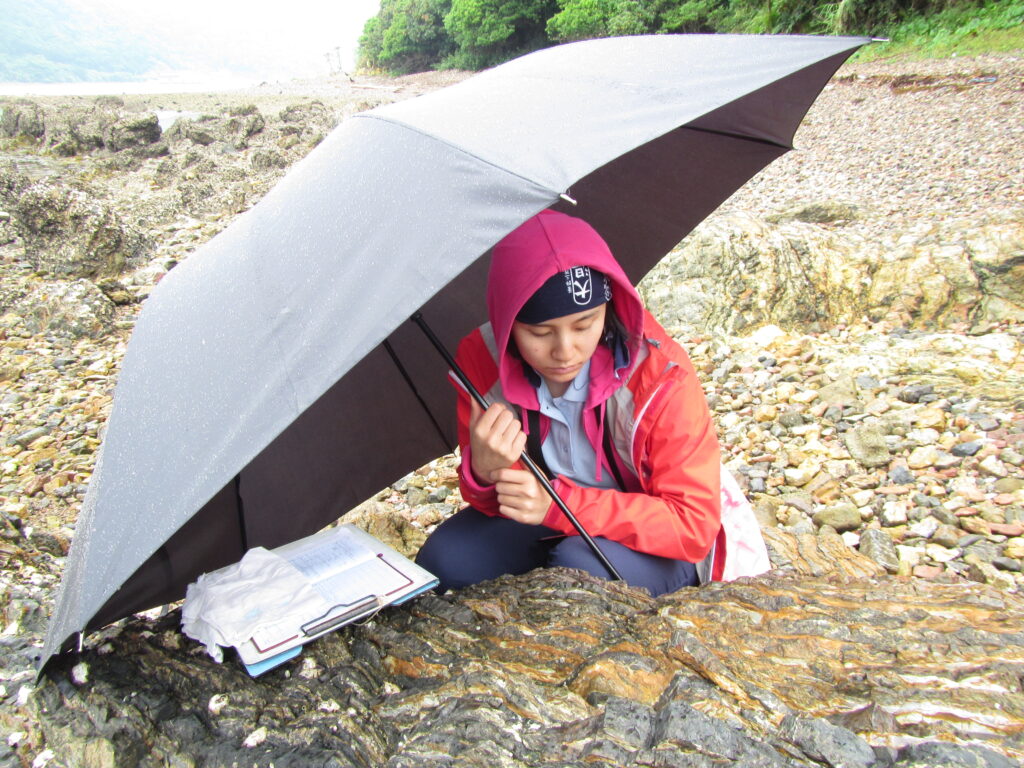
I studied the Lower Triassic Osawa Formation in Miyagi prefecture. This formation is famous for yielding fossils of ichthyosaurs. It led me to study Utatsusaurus, the ichthyosaur excavated from the formation. The fossil was flattened like pancake due to the pressure it experienced, which made interpretation of the bones difficult. The fossil is displayed in Kahaku in Ueno (not in Tsukuba), so, if you are interested, please have a look. As in this example, some specimens on display in museum are still under study.
When paleontology is featured by media, excavation sites are usually shown. That make lots of people think that paleontologists dig up fossils by themselves and study them, but that is not always the case. Of course, many paleontologists go to excavation sites and report the fossils found, but fossils, especially vertebrate fossils, are relatively rare and usually it is very difficult to get the ones you want. Therefore, visiting museums and observing the specimens stored is an important part of our work. The specimens stored in museums are prepared and archived for academic research. Some famous specimens can provide new knowledge when your study is from new viewpoint.
After I finished master’s course, I re-entered this graduate school as a PhD student after working for three years in a company. Age is a just a number. In my case, the entrance examination for PhD course was a presentation on my master’s thesis, without paper exam, because I had graduated from this department (If you are from other graduate schools, you need to pass the paper exam). This is the same examination for graduate students from the master’s course of this department. The rule of the examination will change year to year, so please make sure to check the guidelines well and ask the office questions if you have any questions.
Now, I am visiting museums inside and outside of Japan and studying ichthyosaurs from various age and localities. A lot of organizations (e.g., JSPS) offer financial support to the cost of travelling or studying abroad, so it would be worthwhile to search for such offers. Fortunately, I had an opportunity to visit the lab of the researcher leading ichthyosaur study in the United States, which was a big turning point for me.
This is my experience of having gone down a somewhat different route than most doctoral students in this department. I hope it will provide some information useful for you.
Kazuko Yoshizawa (Geosphere and Biosphere Science Group, Professor Tsuihiji ‘s Laboratory, 3rd year doctoral student)
[2023.04Release/2023「Student life」]

